Data Brief 2021-013 | May 7, 2021 | Written and compiled by Leila Gonzales and Christopher Keane, AGI
Download Data Brief
COVID-19 impacts on geoscience K-12 faculty
This data brief provides insights from the most recent results from the
Geoscience COVID-19 study regarding impacts to geoscience K-12 faculty
during the pandemic. We examine the change in primary work location of
K-12 faculty, work and research activities, engagement with professional
development activities, and pandemic-related restrictions for facility
access, health and safety protocols, and meetings and travel. We also
examine the top concerns of K-12 faculty that have been driven by the
pandemic.
Work Location
In February 2020, the primary work location of 94% of K-12 faculty was
at their school / office, while 6% of reported that their primary work
location was working from home. By May 2020, primary work locations had
switched, with 91% of K-12 faculty reporting working from home and 9%
reporting working from their employer’s office as their primary work
location.
Starting in September 2020, K-12 faculty began to split time between
working from home and the office, and in March 2021, the primary work
location of K-12 faculty had switched from home to the office. Despite
this change in work location, however, 40% of K-12 faculty reported that
they did not need to be in the office to perform their work, and 20%
reported that it was only slightly necessary for them to be in the
office.
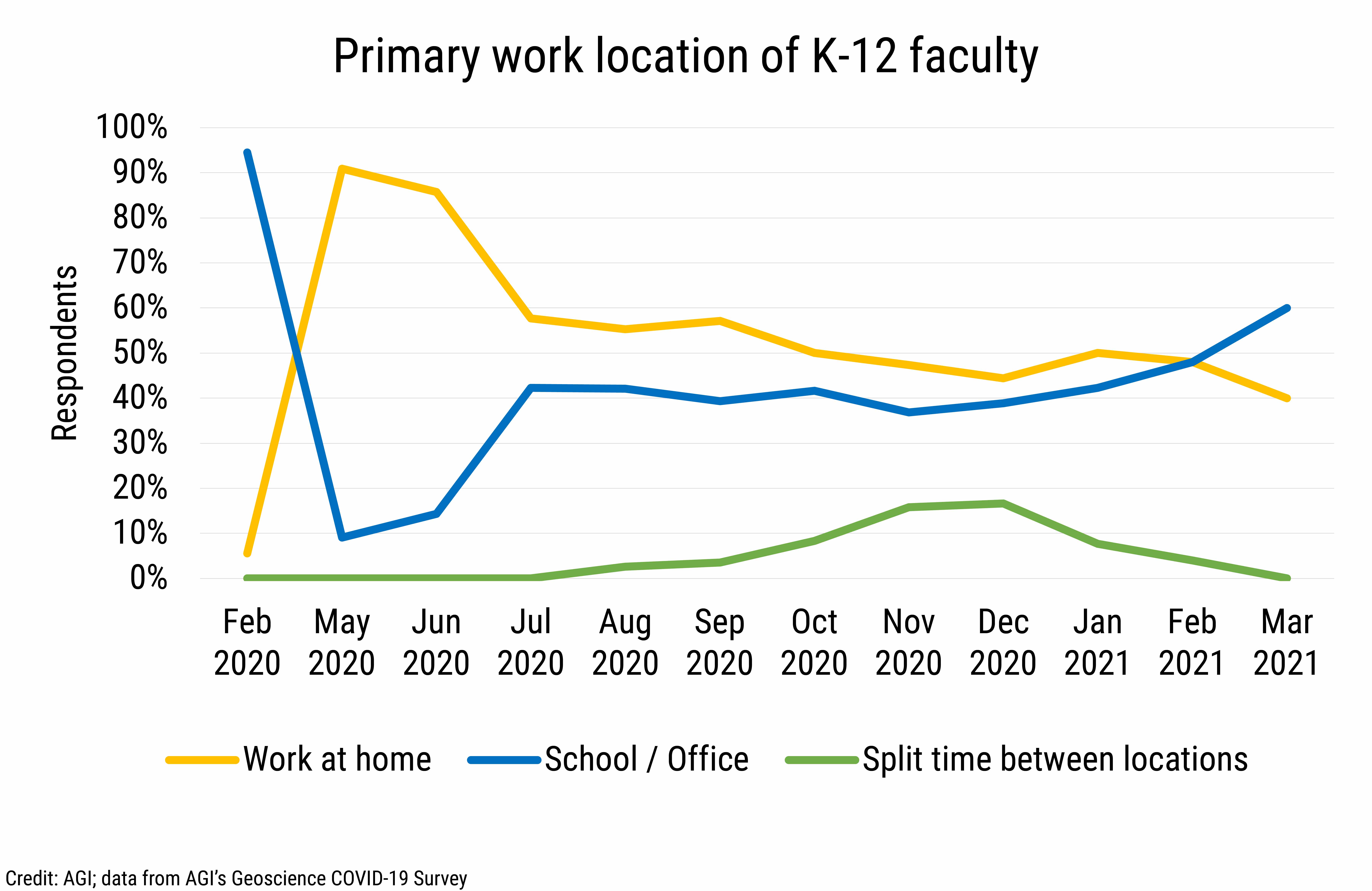
DB_2021-013 chart 01: Primary work location of K-12 faculty (Credit: AGI; data from AGI's Geoscience COVID-19 Survey)
AGI
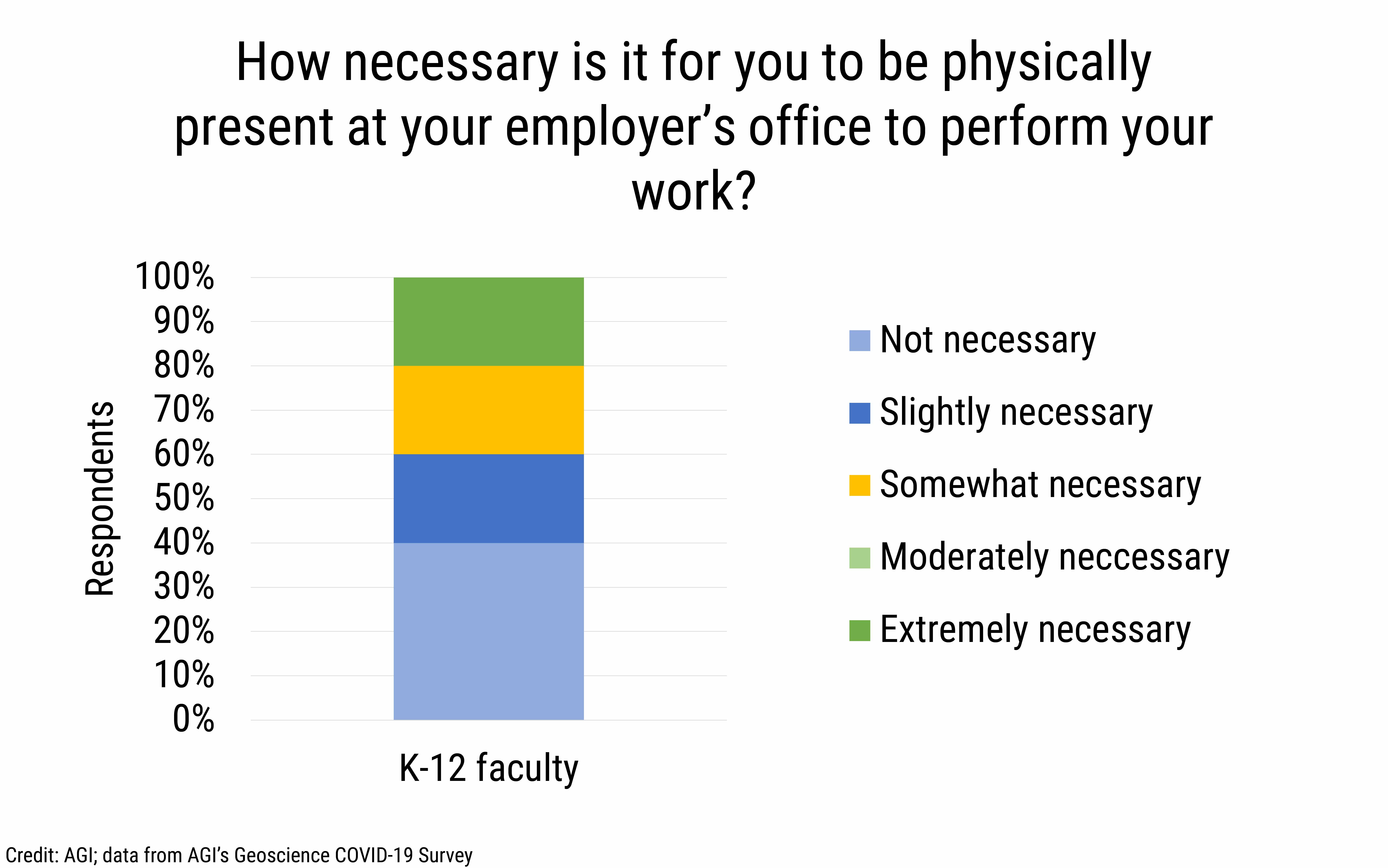
DB_2021-013 chart 02: How necessary is it for you to be physically present at your employer’s office to perform your work? (Credit: AGI; data from AGI's Geoscience COVID-19 Survey)
AGI
Work and Research Activities
Online research continues to be the primary work and research mode for
geoscience K-12 faculty. Since September 2020, literature review,
writing, and editing have been the second most common mode of work and
research. Lab-based activities, reported by one-fifth to one-third of
K-12 faculty from July through December, increased through the winter
months, peaking at in February 2021. Computational research activities
were reported by 20% to 30% of K-12 faculty through Fall 2020 and
declined in the winter months. In addition, approximately one-tenth of
K-12 faculty reported conducting fieldwork activities from June through
October 2020 and in February and March 2021.
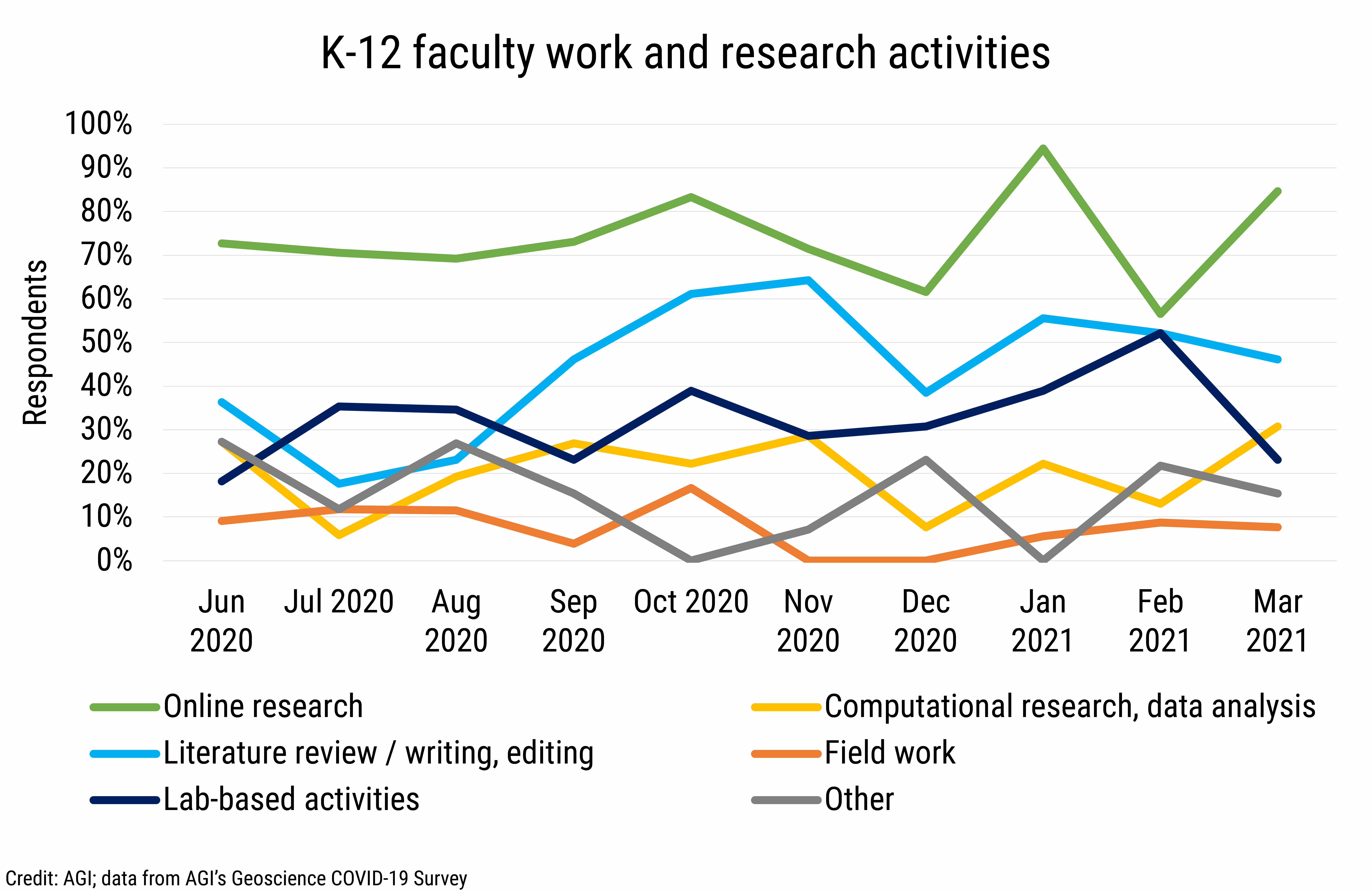
DB_2021-013 chart 03: K-12 faculty work and research activities (Credit: AGI; data from AGI's Geoscience COVID-19 Survey)
AGI
Access restrictions and limited staffing at facilities continue to be
the most common COVID-19 related facility restriction reported by K-12
faculty. While access restrictions have begun to ease, an increasing
percentage of K-12 faculty have reported reduced staffing at facilities.
Furthermore, since June 2020, an increasing percentage of K-12 faculty
reported deferral of field activities. Nearly half of K-12 faculty
reported deferral of lab-based activities in November 2020, and this
percentage has since declined to 28% in March 2021.
The use of face masks inside buildings and social distancing continues
to be the most common COVID-19 related health and safety protocols
reported by K-12 faculty. Since June 2020, an increasing percentage of
respondents have reported COVID-19 related health and safety
restrictions related to the use of face mask both indoors and outdoors,
use of personal protective equipment, COVID-19 testing, and temperature
checks.
Virtual meetings were the most common COVID-19 related meeting and
travel restriction reported by K-12 faculty through January 2021, but
was surpassed by restrictions prohibiting travel and outside visitors.
In March 2021, 61% of K-12 faculty reported restrictions preventing
travel, 56% reported restrictions preventing outside visitors, and 56%
reported having to only use virtual meetings. The percentage of K-12
faculty reporting isolation policies after travelling remained over 20%
for most of July 2020 through March 2021.
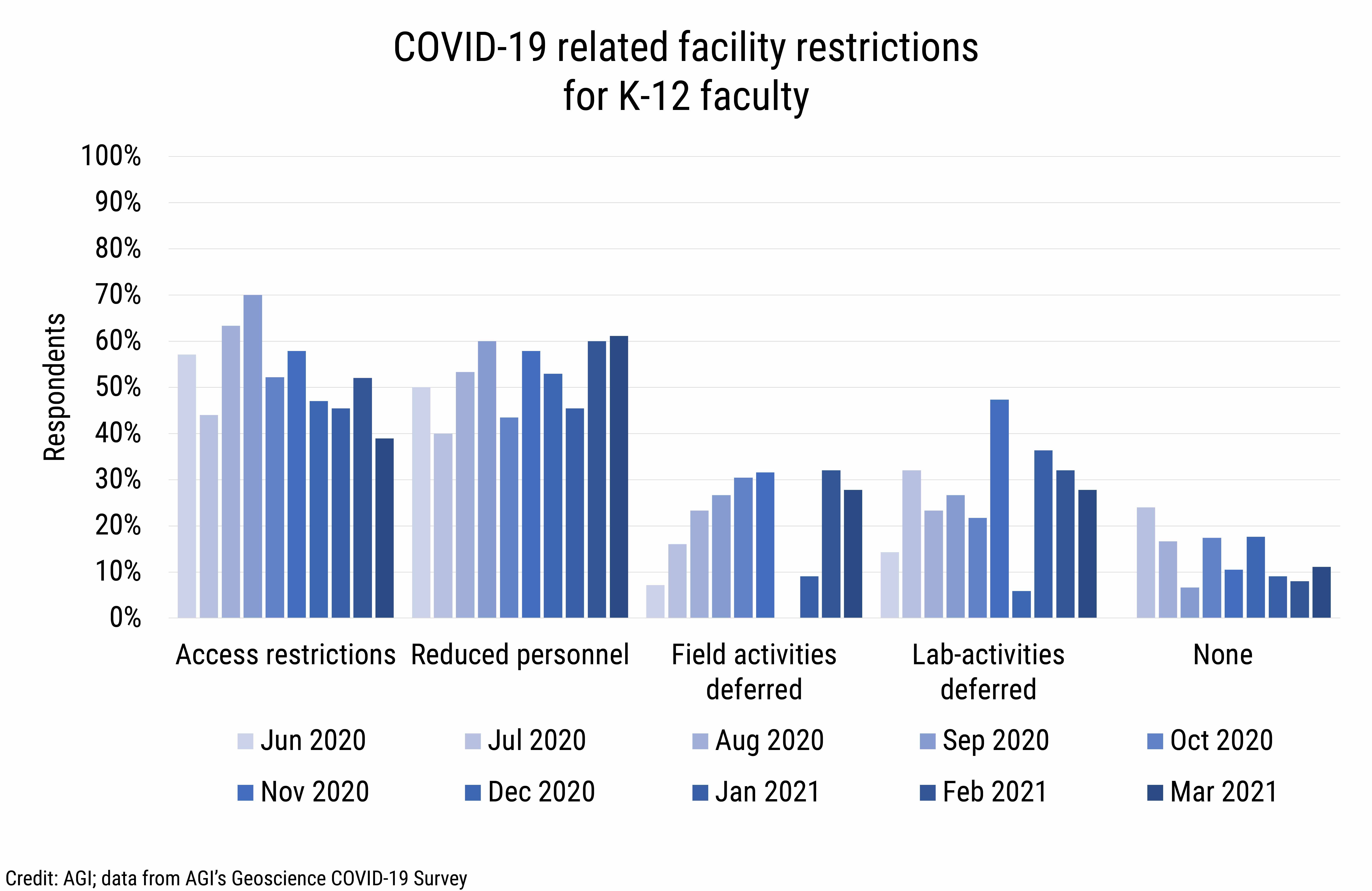
DB_2021-013 chart 04: COVID-19 related facility restrictions for K-12 faculty (Credit: AGI; data from AGI's Geoscience COVID-19 Survey)
AGI
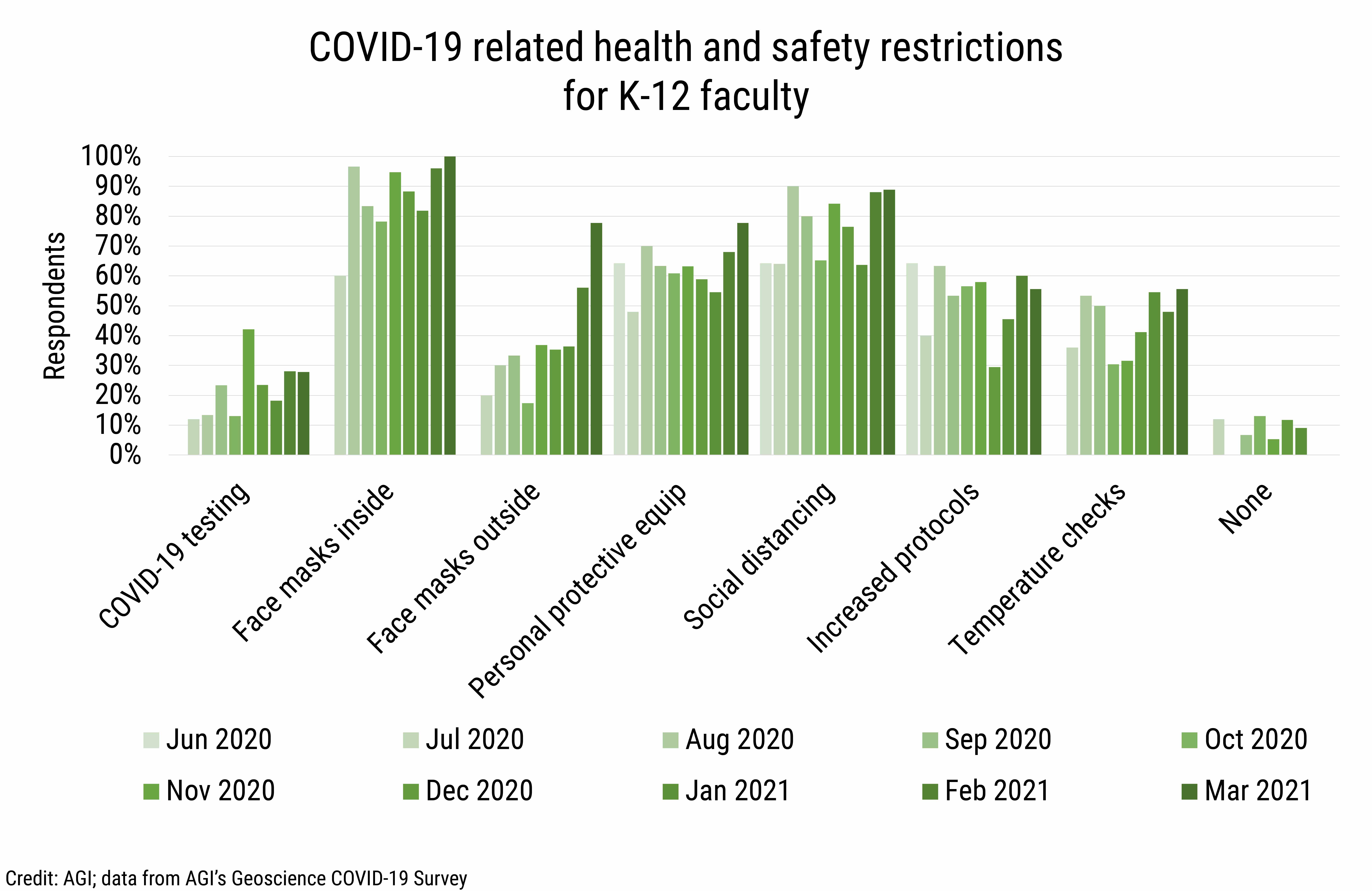
DB_2021-013 chart 05: COVID-19 related health and safety restrictions for K-12 faculty (Credit: AGI; data from AGI's Geoscience COVID-19 Survey)
AGI

DB_2021-013 chart 06: COVID-19 related meeting and travel restrictions for K-12 faculty (Credit: AGI; data from AGI's Geoscience COVID-19 Survey)
AGI
Professional Development
K-12 faculty engaged in a variety of professional development
activities during the pandemic, with most attending virtual workshops or
conferences, webinars, or taking online courses. Approximately half of
K-12 faculty reported taking online courses from June through August
2020 and webinars between June and October 2020.
Over half of K-12 faculty also reported mentoring students and
colleagues during the 2020-2021 academic year. Engagement in community
outreach and professional society activities were the least reported
professional development activities reported by K-12 faculty.
Concerns
For K-12 faculty, workplace safety continues to be the top concern
moderately to extremely driven by the pandemic although the concern has
lessened since September 2020. In March 2021, there was a large increase
in the percentage of K-12 faculty reporting concerns related to academic
rigor, educational opportunities, and employment opportunities that were
moderately to extremely driven by the pandemic.
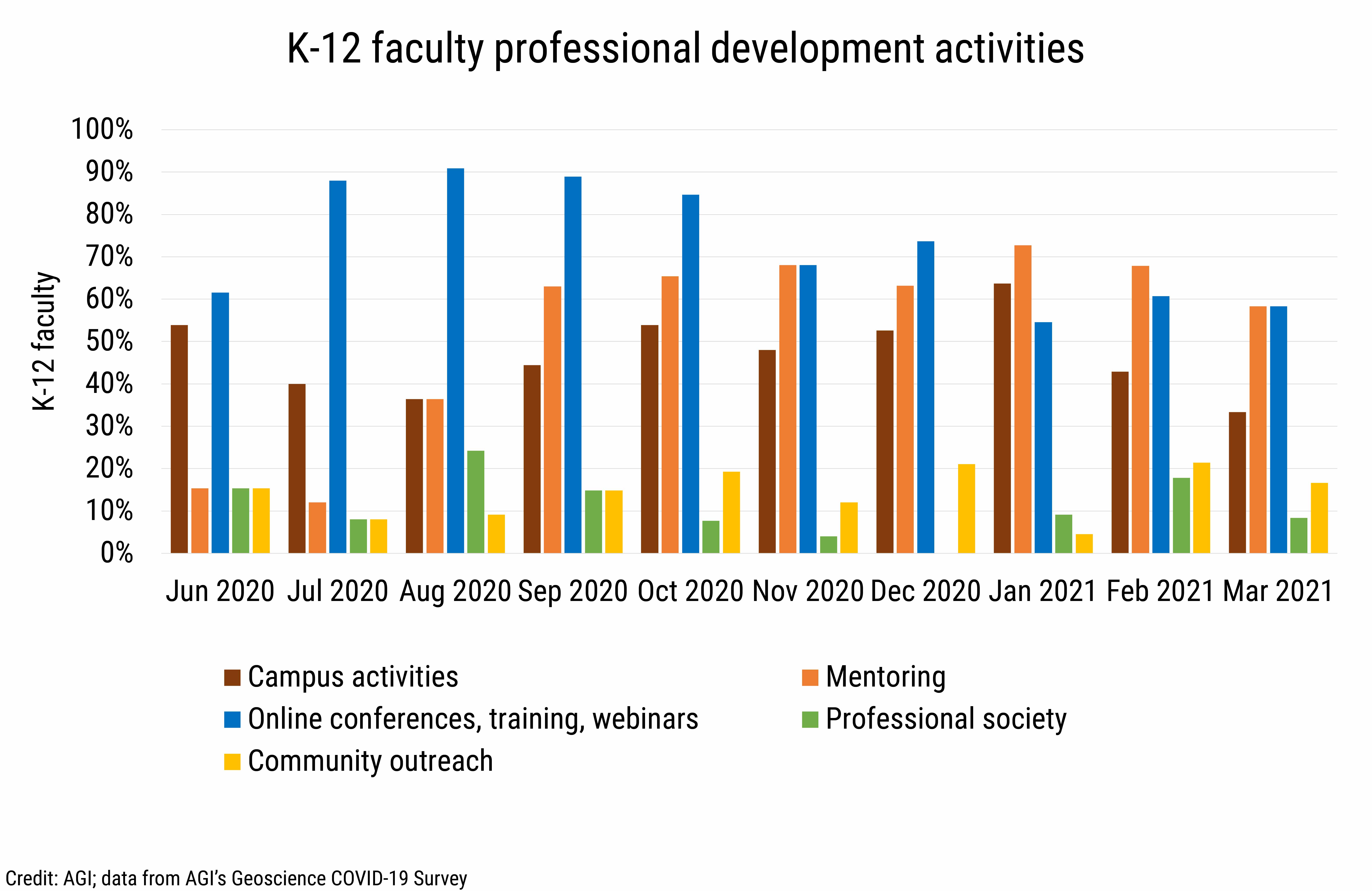
DB_2021-013 chart 07: K-12 faculty professional development activities (Credit: AGI; data from AGI's Geoscience COVID-19 Survey)
AGI

DB_2021-013 chart 08: K-12 faculty concerns moderately to extremely driven by COVID-19 (Credit: AGI; data from AGI's Geoscience COVID-19 Survey)
AGI
We will continue to provide current snapshots on the impacts of COVID-19
on the geoscience enterprise throughout the year. For more information,
and to participate in the study, please visit:
www.americangeosciences.org/workforce/covid19
Funding for this project is provided by the National Science Foundation
(Award #2029570). The results and interpretation of the survey are the
views of the American Geosciences Institute and not those of the
National Science Foundation.